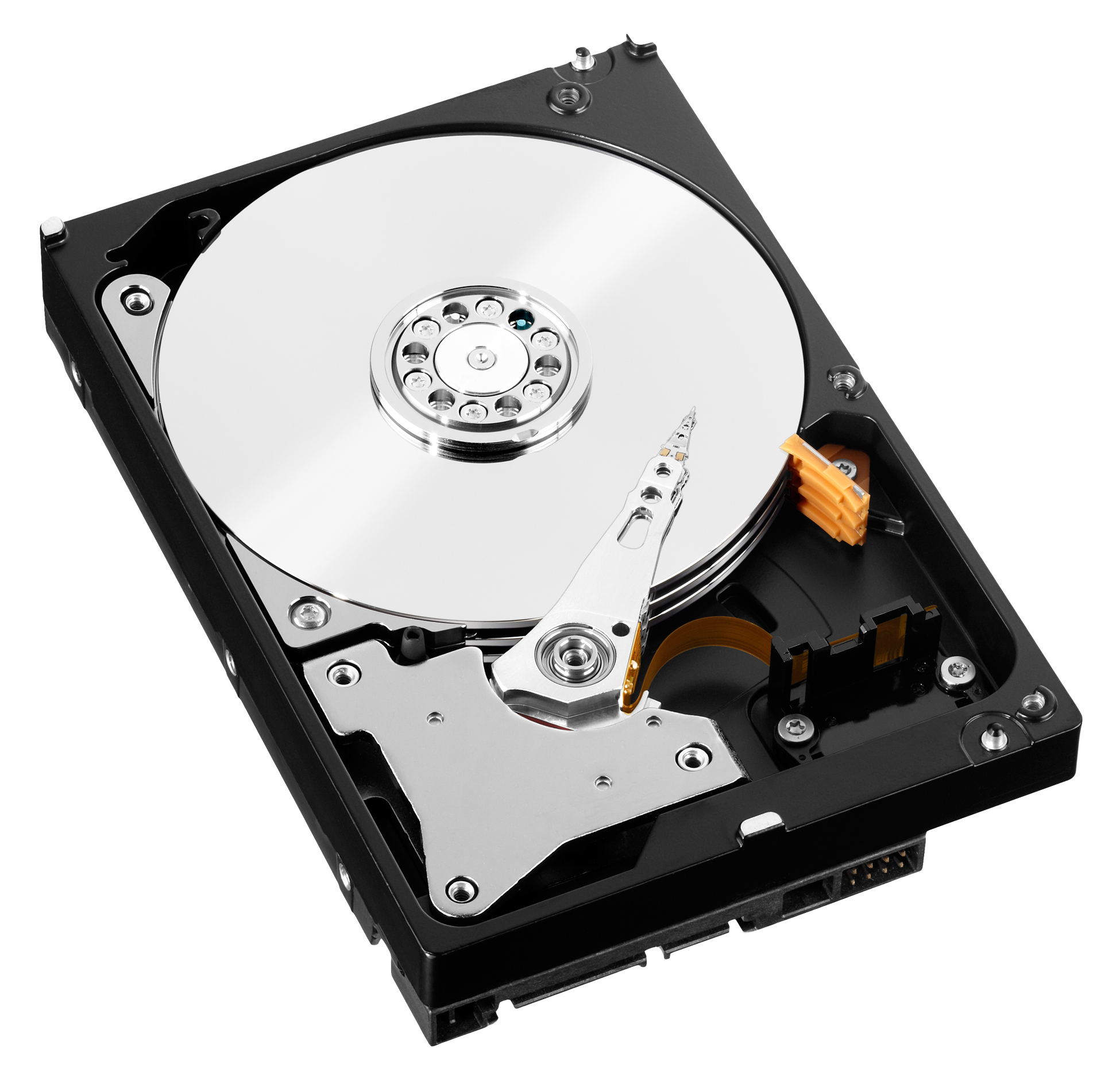
Hard disk, also called hard disk drive or hard drive, magnetic storage medium for a computer. Hard disks are flat circular plates made of aluminum or glass and coated with a magnetic material. Hard disks for personal computers can store terabytes (trillions of bytes) of information. Data are stored on their surfaces in concentric tracks. A small electromagnet, called a magnetic head, writes a binary digit (1 or 0) by magnetizing tiny spots on the spinning disk in different directions and reads digits by detecting the magnetization direction of the spots. A computer’s hard drive is a device consisting of several hard disks, read/write heads, a drive motor to spin the disks, and a small amount of circuitry, all sealed in a metal case to protect the disks from dust. In addition to referring to the disks themselves, the term hard disk is also used to refer to the whole of a computer’s internal data storage. Beginning in the early 21st century, some personal computers and laptops were produced that used solid-state drives (SSDs) that relied on flash memory chips instead of hard disks to store information.
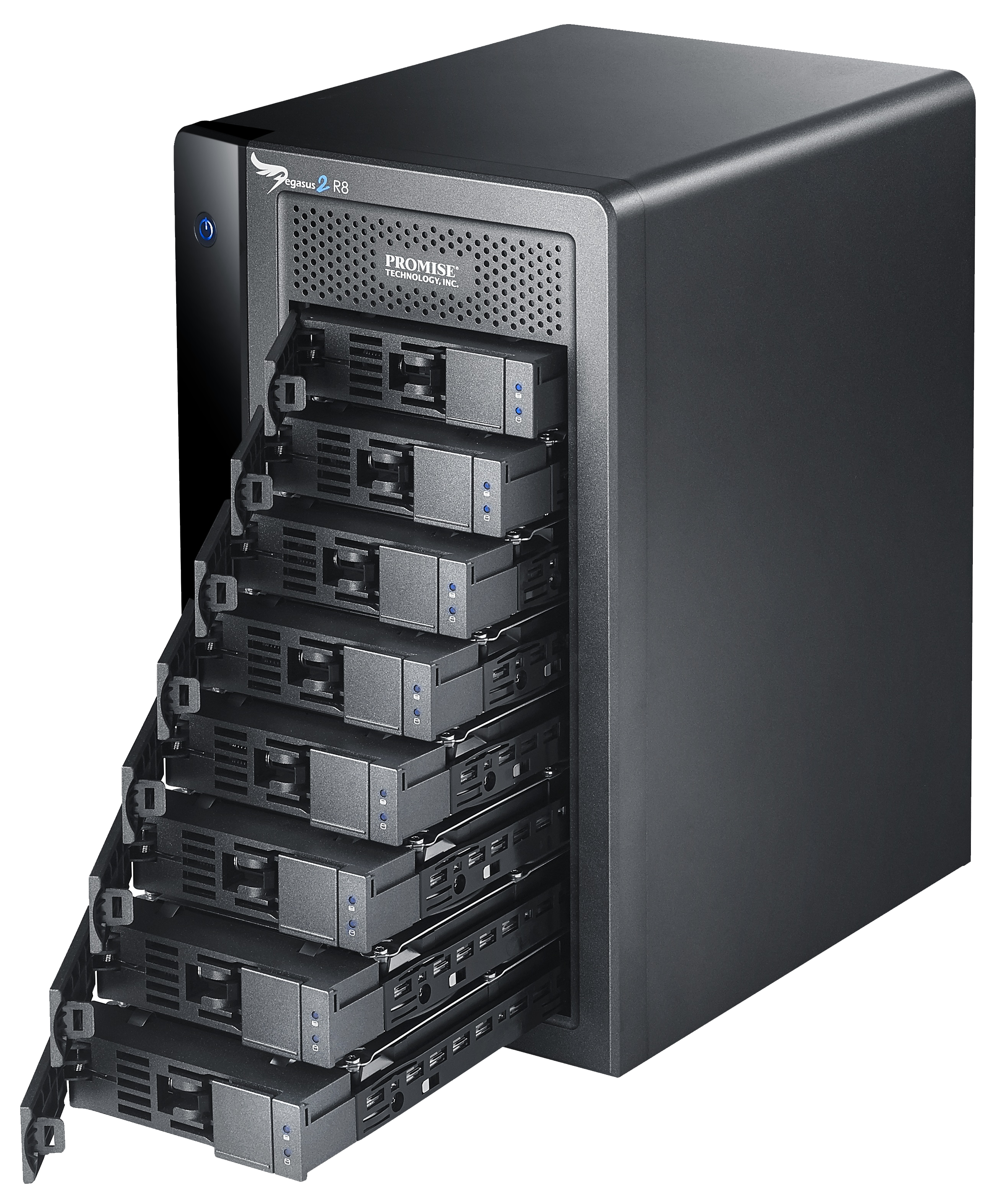
RAID (redundant array of independent disks) is a way of storing the same data in different places on multiple hard disks or solid-state drives (SSDs) to protect data in the case of a drive failure. There are different RAID levels, however, and not all have the goal of providing redundancy. RAID works by placing data on multiple disks and allowing input/output (I/O) operations to overlap in a balanced way, improving performance. Because using multiple disks increases the mean time between failures, storing data redundantly also increases fault tolerance. RAID arrays appear to the operating system (OS) as a single logical drive. RAID employs the techniques of disk mirroring or disk striping. Mirroring will copy identical data onto more than one drive. Striping partitions help spread data over multiple disk drives. Each drive's storage space is divided into units ranging from a sector of 512 bytes up to several megabytes. The stripes of all the disks are interleaved and addressed in order. Disk mirroring and disk striping can also be combined in a RAID array.
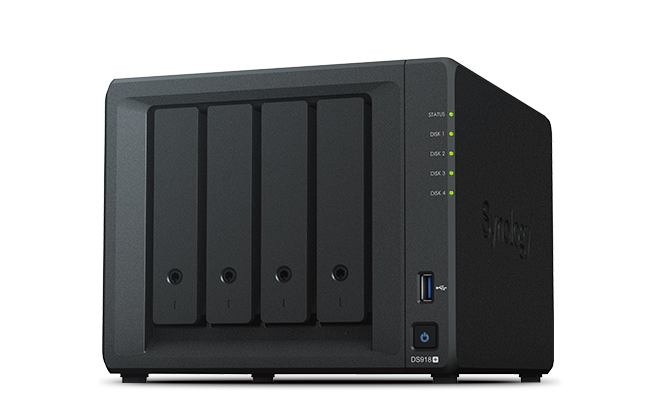
A NAS is a computer connected to a network that provides file-based data storage services to other devices on the network. The primary strength of NAS is how simple it is to set up and deploy. NAS volumes appear to the user as network mounted volume. The files to be served are typically contained on one or more storage drives, often arranged into logical, redundant storage containers or RAID. The device itself is a network node, much like computers and other TCP/IP devices, all of which maintain their own IP address and can effectively communicate with other networked devices. Although a NAS is usually not designed to be a general-purpose server, NAS vendors and third parties are increasingly offering other software to provide server-like functionality on a NAS.
SAN is a dedicated high-performance network for consolidated block-level storage. The network interconnects storage devices, switches, and hosts. High-end enterprise SANs may also include SAN directors for higher performance and efficient capacity usage. Servers connect to the SAN fabric using host bus adapters (HBAs). Servers identify the SAN as locally attached storage, so multiple servers can share a storage pool. SANs are not dependent on the LAN and relieves pressure on the local network by offloading data directly from attached servers. A SAN is a way to provide users shared access to consolidated, block level data storage, even allowing multiple clients to access files at the same time with very high performance. A SAN enhances the accessibility of storage devices such as disk arrays and tape libraries by making them appear to users as if they were external hard drives on their local system. By providing a separate storage-based network for block data access over high-speed Fibre Channel, and avoiding the limitations of TCP/IP protocols and local area network congestion, a SAN provides the highest access speed available for media and mission critical stored data. Because it’s considerably more complex and expensive than NAS, SAN is typically used by large corporations and requires administration by an IT staff. For some applications, such as video editing, it’s especially desirable due to its high speed and low latency. Video editing requires fair and prioritized bandwidth usage across the network, which is an advantage of SAN. A primary strength of a SAN is that all of the file access negotiation happens over Ethernet while the files are served via extremely high speed Fibre Channel, which translates to very snappy performance on the client workstations, even for very large files. For this reason SAN is widely used today in collaborative video editing environments.

A pen drive is a portable Universal Serial Bus (USB) flash memory device for storing and transferring audio, video, and data files from a computer. As long as the desktop or laptop has a USB port, and the pen drive is compatible with the operating system, it should be easy to move the data from the hard drive to the device — and to another computer — in a matter of minutes. The drive gets its name from the fact that many have a retractable port connector like a ballpoint pen, and they are small enough to fit into a pocket. Other names include flash drive, jump drive, and thumb drive. There are several different computer operating systems in use today, so most manufacturers configure their pen drives to work with a variety of systems. Before buying any portable storage device, a consumer should read the packaging carefully to make sure that it will work with his or her computer system. Frequently, even users who own older operating systems can find compatible storage devices, as long as those computers have a USB port.
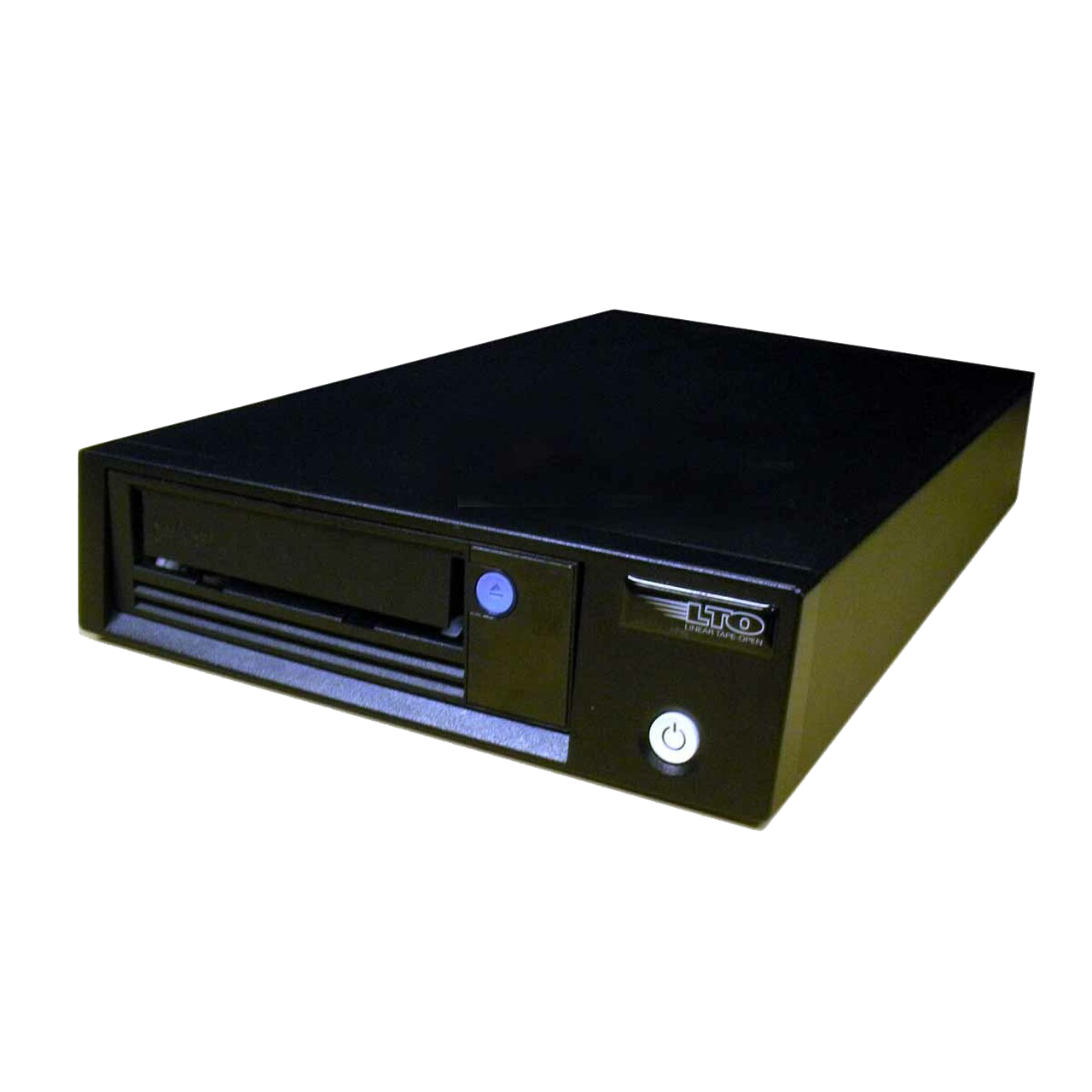
A tape drive is a data storage device that reads and writes data using magnetic tape. Tape drives have data capacities of anywhere from a few hundred kilobytes to multiple terabytes. The first tape drives were used in the 1950s. Cassette tapes are a common type of drive and were often used in households in the 20th century. Video Home System (VHS) tapes, which stored movies and other visual data, were also common household items. Plastic typically surrounds the tape so that it isn’t directly exposed to harmful elements. The disadvantage of tape drives is that they are sequential-access devices, which means that to read any particular block of data, you need to read all the preceding blocks. This makes them much too slow for general-purpose storage operations. However, tape is less expensive than cloud storage for making backups. Tape can also be cheaper than disk drives, and it’s much less expensive than solid-state drives, the fastest of which are used in top-tier enterprise data centers. Though the data storage industry often discusses tape as a very outdated and slow method of storage, it’s still used heavily. For some purposes, such as hot storage for critical enterprise workloads, tape does not work: reading data from a tape is not sufficient for the low-latency random read speeds required by enterprise applications. However, according to the Tape Storage Council, tape storage is the most cost-effective option for long-term storage. Tape drives are also less likely to fail than HDDs, and they’re currently more scalable, while HDDs’ storage density has decreased significantly in recent years. For secondary or tertiary methods of offsite backup, tape storage is a good option. The film industry also uses LTO—linear tape open, which has a much longer life than HDDs—to store large volumes of movie data. Tape drives protect data from some security threats to which SSDs and cloud storage are more susceptible. Cloud-stored data can typically be accessed through a network, and networks are breachable. Tape, however, would be nearly impossible to hack. If physical tape cartridges are not destroyed, then data backed up on tape is safe from online threats such as ransomware because in storage, the contents of the tape itself are physically separated from the tape drives that read or write them. Too, tape can be stored in high-secure, disaster-hardened locations, thus lessening the possibility of physical damage.
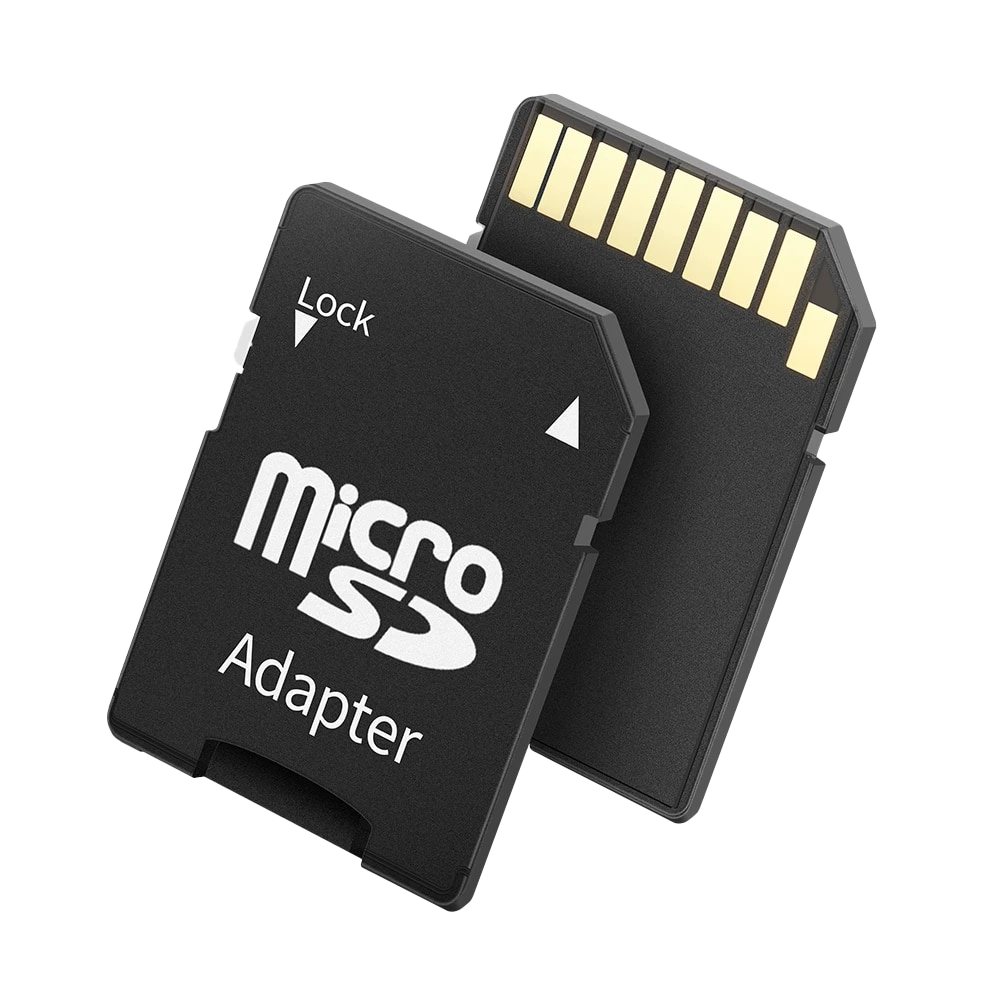
A memory card is a type of storage device that is used for storing media and data files. It provides a permanent and non-volatile medium to store data and files from the attached device. Memory cards are commonly used in small, portable devices, such as cameras and phones. A memory card is also known as a flash card. A memory card is mainly used as a primary and portable flash memory in mobile phones, cameras and other portable and handheld devices. PC Cards (PCMCIA) were a predecessor of modern memory cards that were introduced for commercial purposes. Besides providing non-volatile media storage, a memory card also uses solid state media technology, which lowers the chances of mechanical problems, such as those found in traditional hard drives.A memory card is mainly used as a primary and portable flash memory in mobile phones, cameras and other portable and handheld devices. PC Cards (PCMCIA) were a predecessor of modern memory cards that were introduced for commercial purposes. Besides providing non-volatile media storage, a memory card also uses solid state media technology, which lowers the chances of mechanical problems, such as those found in traditional hard drives.